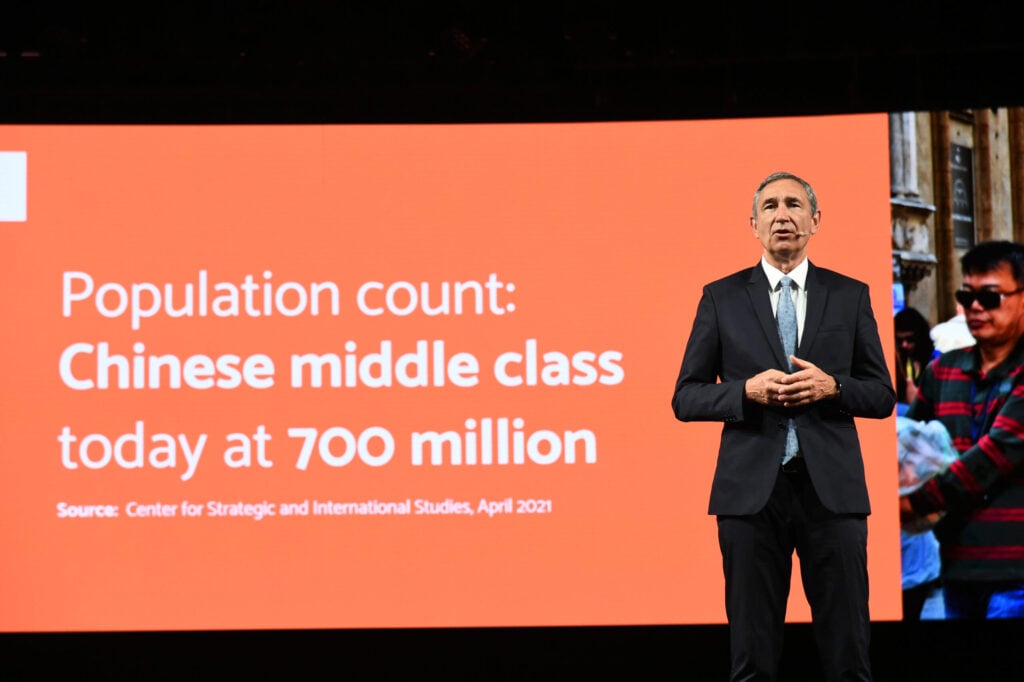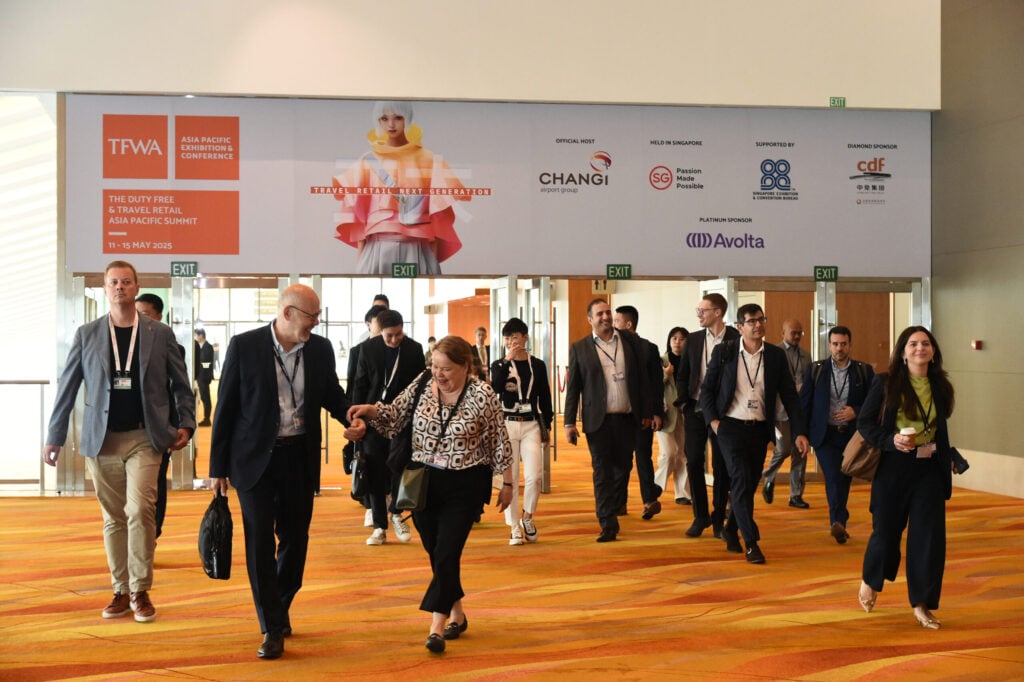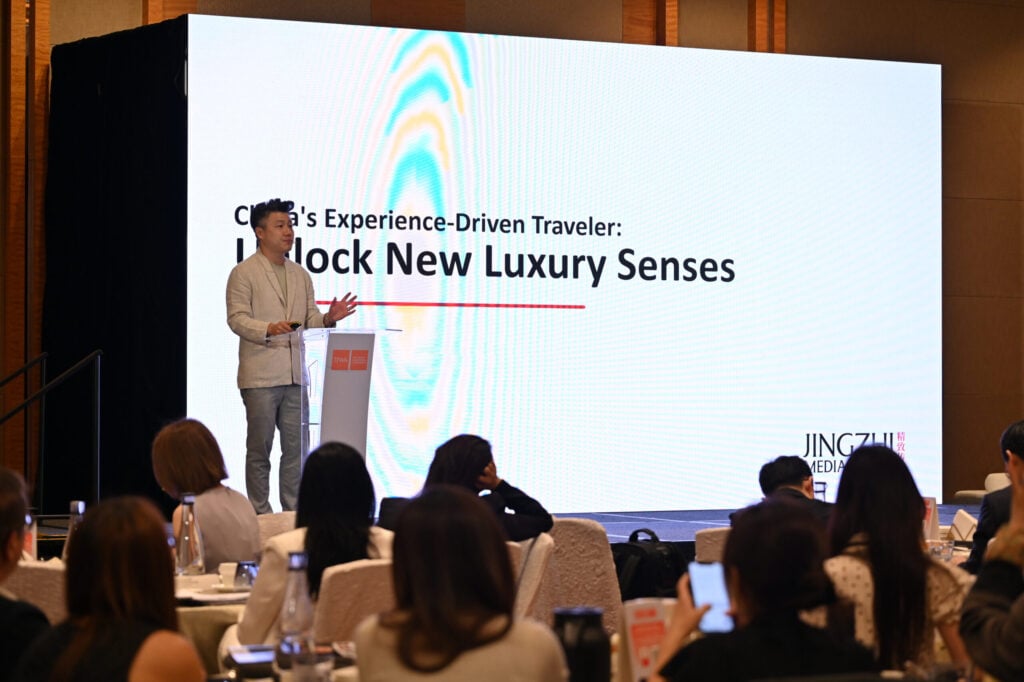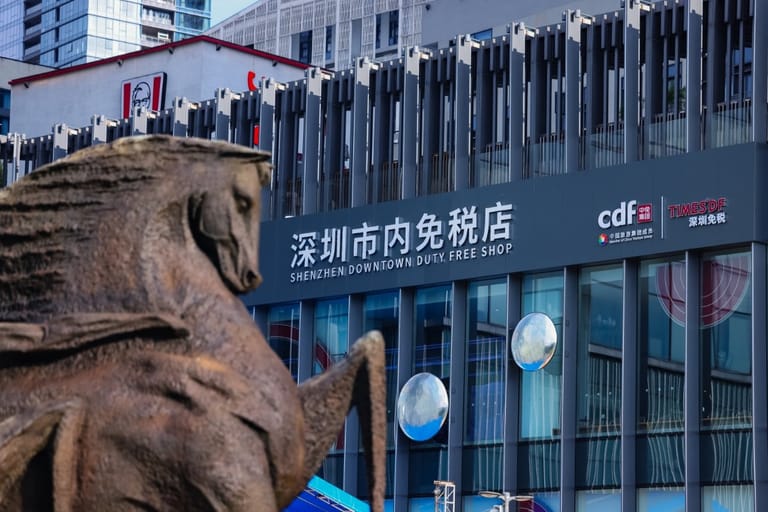Redefining Travel Retail: TFWA’s Vision for Asia Pacific and China’s Global Role
By
Charlie Gu

Published on
May 21, 2025

The Visionary profiles the individuals redefining creativity and leadership in China’s evolving landscape—from fashion and art to technology and business. Through in-depth interviews and sharp analysis, this column unveils the minds driving innovation, exploring their inspirations, challenges, and the lasting impact of their work. These trailblazers aren’t just keeping pace with change; they’re leading it.
When Philippe Margueritte was elected President of the Tax Free World Association (TFWA), he stepped into the role at a pivotal moment. As global travel retail adapts to evolving consumer expectations and macroeconomic uncertainty, the Asia Pacific—particularly China—has reasserted itself as the industry’s central growth engine.
Speaking to Jingzhi Chronicle during the 2025 TFWA Asia Pacific Exhibition & Conference in Singapore, Margueritte outlines a vision that balances global collaboration with local empowerment, positioning TFWA as a platform for innovation and international brand building.
“We have been in the region for more than 30 years now,” Margueritte says. “The partnership with the region has been in our veins for many years. And this will not change.”
But the nature of that partnership is evolving. As Margueritte emphasized in both his keynote address and interview with Jingzhi Chronicle, the role of the conference has shifted from a West-to-East trade gateway to a global stage for regional voices.
“What we want to do is to be also a launchpad for local regional brands and, of course, Chinese brands to be able to find here the opportunity to showcase to the rest of the world to gain distribution into the Asian market, but also into Europe, into the Middle East, into the Americas,” he said.

Positioning China Beyond Transactional Growth
This expanded vision is particularly relevant to China, home to the world’s largest middle class at over 700 million strong. While short-term consumer confidence has fluctuated due to macroeconomic factors, Chinese outbound travel is rapidly recovering. Passenger numbers are projected to reach a staggering 200 million by 2028, with two-thirds of travelers expected to be Gen Z.
Yet for many Chinese brands, travel retail is still viewed through a transactional lens—focused on volume, not visibility.
While turnover remains key, a brand present in key airports must raise its premium image to become a true luxury brand, Margueritte notes. “It’s the big difference being a brand that is internationally recognized versus being only a brand recognized in its home market.”
TFWA’s goal is to help change that perception. “We need to work internally, but with the help [from media], to explain how travel retail can be important for brands,” Margueritte said.

Design for the Traveler’s Mindset
The TFWA brings together brands, retailers, and landlords at airports, ferry terminals and land border crossings to spur travel retail and bolster brand visibility at international points of entry and departure and during flight.
For Margueritte, brands situated in these spaces where passenger time is limited must capitalize on one of travel retail’s greatest—and often overlooked—advantages: the traveler’s mindset.
“When you are at home, your brain is not as open as when you’re traveling. When you are traveling, you’re putting yourself out of your zone of comfort. You try on new brands, new experiences.” This openness makes airports a high-impact environment for brand discovery. According to TFWA, the percentage of travelers planning their purchases in advance has dropped from 62 percent in 2019 to just 47 percent today. The shift is particularly noticeable among Gen Z consumers, who increasingly make purchases based on real-time stimuli, disrupting traditional duty-free models competing solely on price.
In his keynote, he noted the rise of hybrid formats that merge retail with food and beverage, enabling, for example, travelers to purchase the wine they enjoyed with their onboard meal. F&B, according to Margueritte, is the fastest-growing commercial activity in Asia Pacific airports and offers a model for more immersive, sensory-driven engagement.
And the change also applies to TFWA’s own approach.
Margueritte hints that TFWA will incorporate more experience-driven moments in their events. “The same senses we want to trigger for the consumer, we also want to trigger them for our events to bring much more excitement and novelty to it.”

Taking the Lead on Sustainability
Alongside experience and innovation, Margueritte emphasized that sustainability must become an industry non-negotiable. Citing data from the World Travel and Tourism Council, he noted that over 80 percent of global travelers care about sustainable travel, and 75 percent are willing to travel more sustainably in the coming year.
“Sustainability must be integral to everyone’s strategy in this sector as we plan for the future,” he highlights in his keynote. “At TFWA, we are willing to play our part.”
He pointed to several initiatives already in place at the Asia Pacific Exhibition & Conference, including the venue’s carbon neutrality, sourcing over 70 percent of food locally or regionally, the exclusive use of recycled paper, and ongoing tracking of the event’s carbon footprint and waste diversion.
“We want to lead by example and show the industry how important sustainability is for us in the future,” he says. “And as you know, this is very important for the new generation of shoppers.”
AI and the Power of Collaboration
Another key pillar of TFWA’s strategy is enabling more intelligent use of data. Margueritte was clear: Travel retail holds some of the most precise shopper insights available.
“We know the nationality of the people, the age, where they are going, what they buy, which airline they are taking,” he said.
He outlined a future where artificial intelligence enables real-time adaptation, delivering personalized offers, product displays, and experiences tailored to individual flight schedules and traveler profiles. But this potential hinges on one crucial factor: collaboration.
“Our ability to use this technology depends on our readiness to share and make better use of data,” he explains in his keynote. “We need to adopt a more collaborative mindset, joining forces to professionalize our industry and share the shopper data that underpins any serious retail business today.”
TFWA and the Future of Travel Retail in China
TFWA’s commitment to China runs deep. In addition to its long-standing partnerships, the organization is in active dialogue with Chinese players to explore deeper engagement in key markets such as Hainan, given the tropical island’s continued growth opportunities as a domestic and international duty-free hub.
At this year’s conference, the dedicated China Market Workshop addressed rapidly evolving topics including the power of China’s silver generation and shifting consumer mindsets.

“China is at the top of our mind for future communications and gatherings,” Margueritte said.
For Chinese brands with global ambition, TFWA represents more than a trade show: It has evolved beyond mere passenger movement to embody greater meaning.
A new era of travel retail has arrived.












